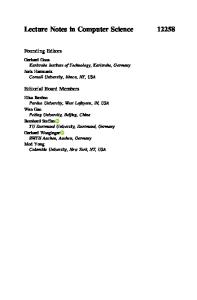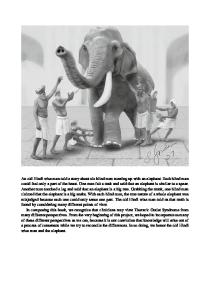Nanotechnology Research Directions for Societal Needs in 2020 Retros
This volume presents a comprehensive perspective on the global scientific, technological, and societal impact of nanotechnology since 2000, and explores the opportunities and research directions in the next decade to 2020. The vision for the future
- PDF / 33,028,994 Bytes
- 723 Pages / 439.37 x 666.142 pts Page_size
- 116 Downloads / 336 Views
Science Policy Reports The series Science Policy Reports presents the endorsed results of important studies in basic and applied areas of science and technology. They include, to give just a few examples: panel reports exploring the practical and economic feasibility of a new technology; R & D studies of development opportunities for particular materials, devices or other inventions; reports by responsible bodies on technology standardization in developing branches of industry. Sponsored typically by large organizations – government agencies, watchdogs, funding bodies, standards institutes, international consortia – the studies selected for Science Policy Reports will disseminate carefully compiled information, detailed data and in-depth analysis to a wide audience. They will bring out implications of scientific discoveries and technologies in societal, cultural, environmental, political and/or commercial contexts and will enable interested parties to take advantage of new opportunities and exploit on-going development processes to the full.
For other titles published in this series, go to http://www.springer.com/series/8882
Mihail C. Roco • Chad A. Mirkin Mark C. Hersam
Nanotechnology Research Directions for Societal Needs in 2020 Retrospective and Outlook
Mihail C. Roco National Science Foundation 4201 Wilson Boulevard Arlington, VA 22230 USA Mark C. Hersam Department of Engineering and Materials Science Northwestern University 2220 Campus Drive Evaston, IL 60208 USA
Chad A. Mirkin Department of Chemistry Northwestern University 2145 Sheridan Road Evaston, IL 60208 USA
The cover picture suggests the integration of various nanotechnology-based solutions in the design of a blended hybrid-wing-body concept for future subsonic commercial aircraft. It represents a radical departure from conventional subsonic aircraft design. Mechanical and thermal insulation properties of the nanocomposite will allow for “morphing” airframe and propulsion structures that can change their shape or properties on demand to improve aerodynamic efficiency and respond to damage. Composite materials derived from low density, high strength carbon nanotube-based fibers and durable nanoporous matrixes will enable the production of ultralightweight multifunctional airframes and with embedded lightning strike protection. Nanotexturing will create surfaces that are naturally resistant to ice accretion thereby eliminating the need for runway deicing and in-flight ice mitigation. Replacement of heavy copper wiring cables with carbon nanotube wires will enable significant reductions in aircraft weight. Distributed autonomous networks of nanotechnology based state sensors powered by high efficiency energy harvesting (thermoelectric, piezoelectric, or photovoltaics) will enable real-time monitoring of the overall health and performance of the aircraft leading to reduced emissions and noise and improved safety. The design, developed by NASA and Massachusetts Institute of Technology, is for a 354 passenger aircraft that would be available for











